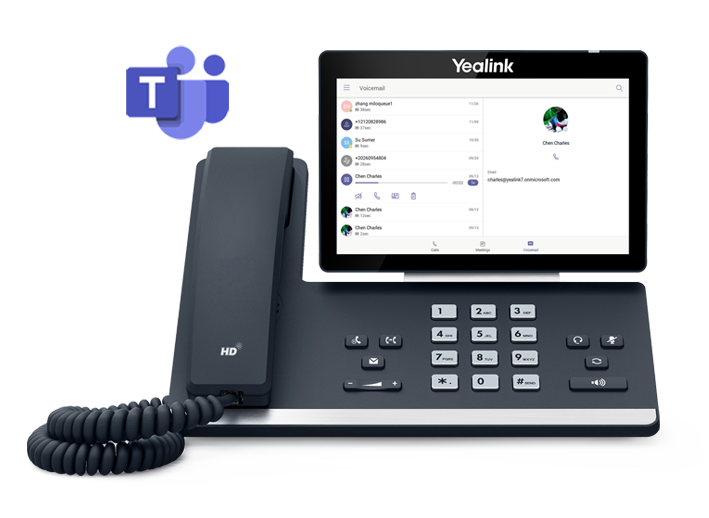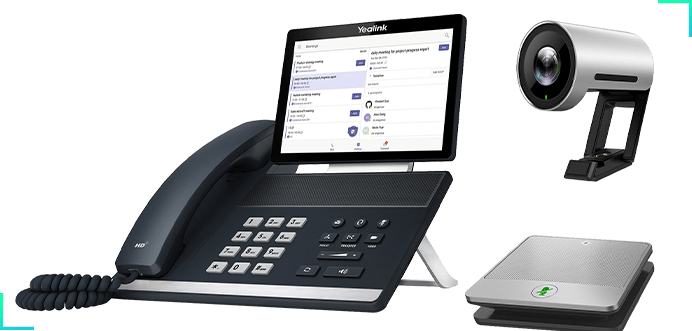Direct Routing Technical Specs
- What is Grapevine Direct Routing
- What are the feature of Grapevine Direct Routing
- How is Grapevine Connect Direct Routing Setup
Microsoft – Office 365, Teams and Phone System
Office 365 is a cloud-based subscription service that brings together the Microsoft tools and applications for the way people work today. By combining apps like Excel and Outlook with cloud services like Microsoft Teams, Office 365 users create, share and communicate anywhere on any device.
Microsoft Teams is the Unified Communications environment which enables Office 365 users to create and share content and communicate in multiple ways (messaging, chat, voice, video).
Phone System is the feature description used by Microsoft as the PBX replacement or voice component of Microsoft Teams, which allows internal (within Teams) and external (PSTN) voice calls and a range of call control features.
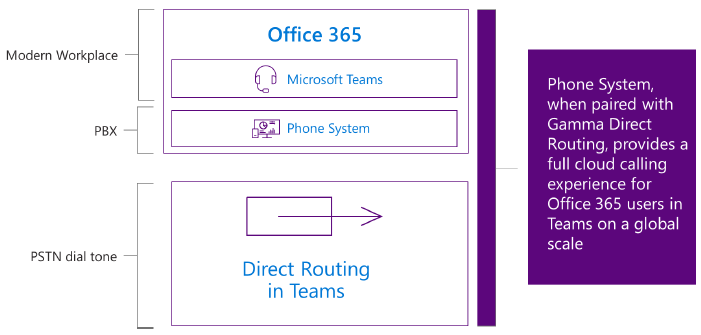
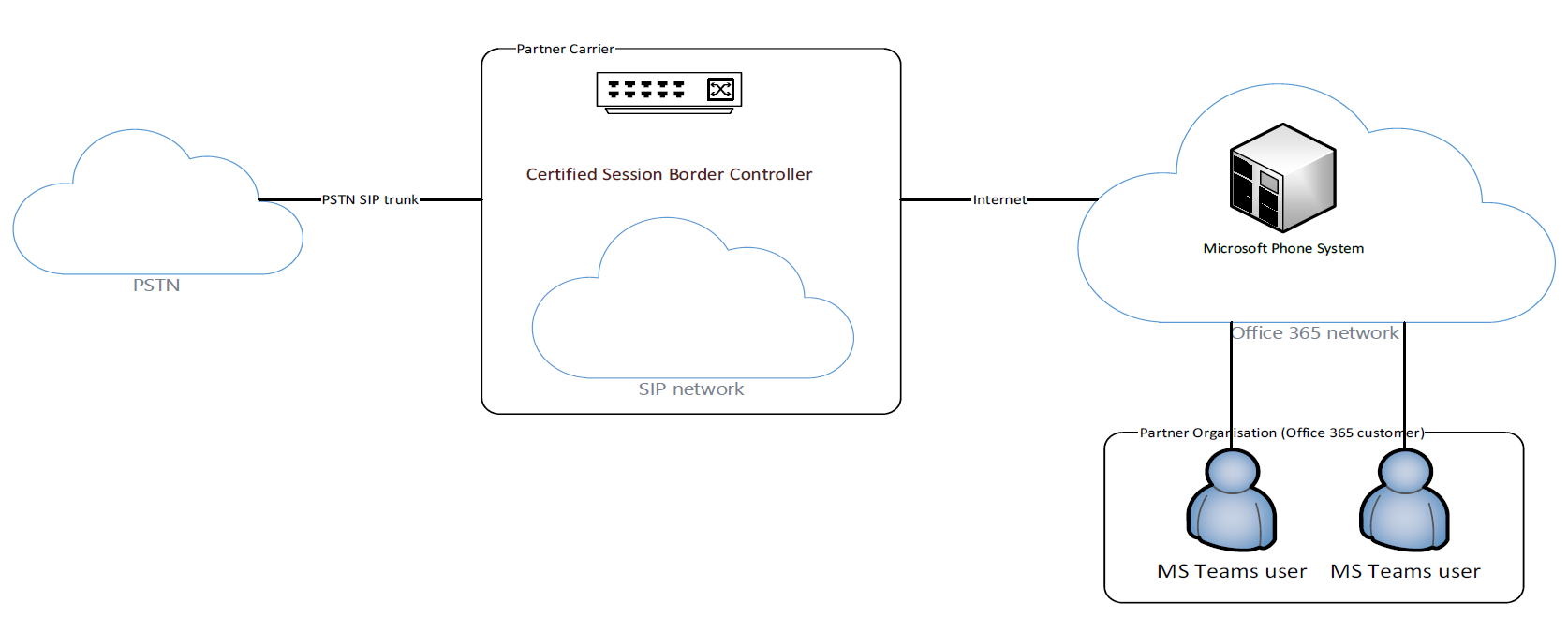
What is the Microsoft Teams Direct Routing Service?
Microsoft Teams – Direct Routing enables PSTN calling and a range of additional call control features for Microsoft Teams. The service provides VoIP connectivity for Phone System, allowing inbound and outbound telephony through our partner network for termination of both national and international destinations.
Microsoft Teams – Direct Routing is a solution available to Office 365 customers who wish to use their preferred voice carrier to enable their users to make and receive PSTN calls in Microsoft Teams. Using Grapevine’s cloud model, whereby Microsoft-certified SBCs (Session Border Controllers) are deployed as a bespoke architecture within our Partner network, for interconnection to Microsoft Phone System for PSTN breakout.
The following types of calls will be supported across this interface:
• Voice calls to/from non-geographical, corporate or VoIP numbers (03, 05, 08)
• Voice calls to/from Premium numbers UK (09) and International
• Voice calls to/from Mobile destinations (07)
• Voice calls to/from International destinations (00..)
• Operator, Emergency and non-Emergency calls (100, 101,111,112, 116xxx, 118,
123 1800x, 195, 999)
The following diagram provides a simple overview of how Microsoft Teams –
Direct Routing is deployed in the partner-hosted model, where Grapevine Connect
provides the enablement for connectivity with the PSTN.
Our SIP Trunk Service provides SIP signalling as a method for Microsoft Teams
Tenants to inter-connect with our VoIP network supporting calls to/from the PSTN.
Service Features
The following features will be supported:
• Calling Line Presentation (CLIP)
• Calling Line Restriction (CLIR)
• Call Park, Transfer & Conferencing
• Emergency Call Divert
• Fraud Alert
• CLI Flexibility
• Call Admission Control
• Call Barring
• DTMF support
• Emergency, Non-Emergency and other
Codec / Packetisation support
G.711 a-law, G.711 mu-law, and G.729 @ 20ms are supported.
Call Definitions
• PSTN calls in MS Teams are calls in which the two parties to the call are not users in the same Office 365 tenant or users in two tenants federated with each other and will be routed via Grapevine Connect.
• On-net calls in MS Teams are calls in which the two parties to the call are users in the same Office 365 tenant or in two tenants federated with each other and will NOT be routed via Grapevine Connect.
Architecture
tHigh Level Design
This section provides a high-level design detailing how Microsoft Teams
– Direct Routing is integrated into our partner network and outlines the
routing requirements to enable calls to be routed to and from Microsoft.
Overview Diagram
The following diagram illustrates the high-level architecture that Grapevine Connect has implemented to support hosted deployment of Microsoft Direct Routing on behalf of its MS Teams customers.
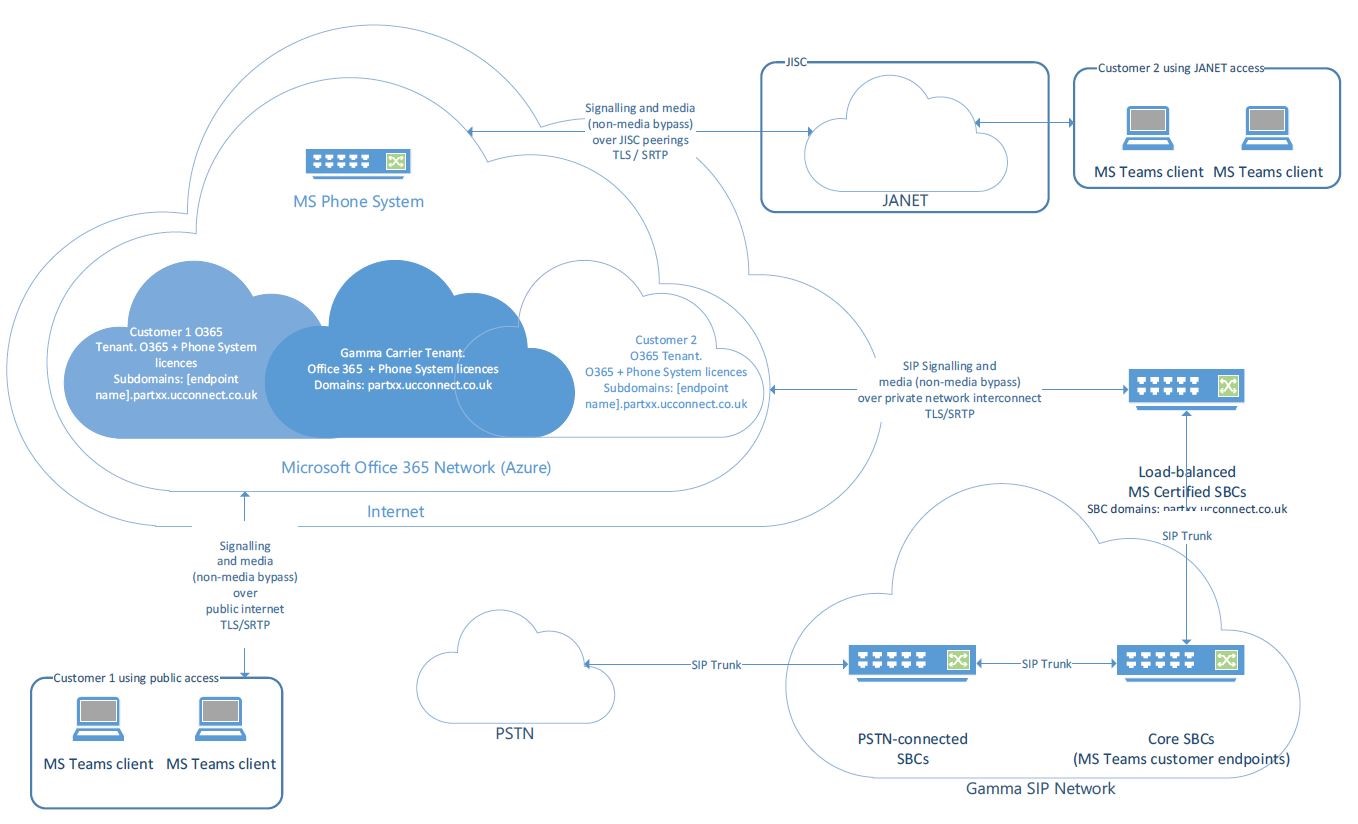
The solution is resilient, offering two geographically diverse networks from Grapevine Connect, each hosted in a separate co-location
space, and connected within an existing PoP. Traffic is Load-shared across the two diverse sites. Each of the two
resilient connections are defined by several SBCs, interfacing on the public side to the Microsoft Teams
Platform (in Azure), which has multiple connections of its own for resilience. The SBCs will route calls to and from
specific URLs in Microsoft Teams.
The elements of this architecture are described below.
Grapevine Network Topology
MS Certified SBCs
The cloud-deployment model for MS Direct Routing requires Grapevine Connect to deploy Microsoft Certified SBCs into its network. The certification of devices/manufacturers is determined and conducted by Microsoft.
Customer SBCs
Each customer service will be terminated on a PSTN connected SBC. It is this element that provides the ability to make PSTN calls.
Network Resilience Model
Distributed MS Certified SBC clusters will be deployed on our partner network, for geographic resilience, and for load-balancing of traffic, on both the public and private sides of the interface between Grapevine and the Office 365 network.
These SBCs will be connected to geographically distributed, load-balanced SBC clusters in the core network, for SIP connectivity and PSTN breakout.
Signalling and Media
Signalling in MS Direct Routing will never be exchanged directly between the MS Teams client and the MS Certified SBCs on the partner network, but always indirectly, via a ‘Call Controller’ component in the Office 365 network.
A ‘SIP Proxy’ component in the Office 365 network exchanges SIP signalling with the MS Certified SBCs on the edge of the partner network. This is in turn exchanged between the MS Certified SBCs and interconnected SBCs on the network, on which MS Teams endpoints will be built using the our Portal. These SBCs will themselves be connected to our core SIP network, enabling signalling and media to be exchanged with the PSTN.
Media will not be exchanged directly between the MS Teams client and the MS Certified SBCs on our network, but indirectly, via the Office 365 network.
Signalling and Media Encryption
Microsoft Office 365 will only initiate and accept signalling connections secured by TLS 1.2.
As shown in Figure 2, this applies to the communication path between the MS Teams user and the Office 365 network. It also applies to the path between the Office 365 network and the MS Certified SBCs deployed on the Grapevine network.
Media will be encrypted using sRTP.
MS Teams environment
Configuration
Within Grapevine Connect, Microsoft Teams – Direct Routing, tenants need to be created and configured in Office 365, for the carrier (Grapevine), and for each customer.
Customer tenant
A tenant will need to be created in Office 365 for each customer partnering with Grapevine Connect for Microsoft Teams – Direct Routing. Responsibility for the creation of the customer tenant lies with the customer. The customer tenant is where:
- individual users are added,
- licences and numbers needed for voice telephony are assigned,
- the connection with Grapevine Connect is configured for routing.
Two Fully Qualified Domain Names (FQDNs) will need to be registered in the customer’s tenant, a process which includes a verification step. These FQDNs are subdomains of the domains of the SBCs on Grapevine Connects network, which are themselves subdomains of our base domain, as explained in the following section. The FQDNs will be used by the Microsoft Phone System for routing calls between MS Teams users in that tenant and the SBCs on our network.
Naming Conventions
There are two specific sets of FQDNs that need to be connected to enable call flows:
- Grapevine Connect Carrier Tenant Domains
- Grapevine Connect Customer Tenant Subdomains
Customer Tenant Subdomain Names
These are subdomains of the Grapevine Connect-owned base domain reserved for use with Teams, and take the form:
<Customer reference>.<part>.<Grapevine Connect domain>
Where :
Customer reference = unique endpoint reference, e.g. ‘TC2NYYABC1234’
part = the identifier of an SBC on our network
Grapevine Connect domain = Grapevine Connect-owned domain: ‘ucconnect.co.uk’
Example : TC2NYYABC1234.part01.ucconnect.co.uk
The FQDN “handshake” that provides the linkage between Grapevine Connect and Teams tenant is identified within the Provisioning section.
Customer FQDNs will be defined by Grapevine Connect. A distinct subdomain will be required for each combination of customer and Grapevine Connect SBC.
Each FQDN will be communicated via email to the party responsible for administering the customer’s Teams tenant, so that it can be registered in their tenant. Creation and administration of the customer tenant, including addition of users and routing plans, will be the responsibility of the customer’s Office 365 administrator.
Carrier Tenant Domain Names
These are subdomains of the Grapevine Connect-owned base domain reserved for use with Teams, and take the form:
<part>.<Grapevine Connect domain>
Where:
part = the identifier of an SBC on our network
Grapevine Connect domain = Grapevine Connect-owned domain: ‘ucconnect.co.uk’
Example: part01.ucconnect.co.uk
Service Characteristics
Endpoints
An endpoint represents the interface for a Microsoft Teams Phone System tenant.
Endpoint Naming
The following naming convention is used for identifying endpoints on our network:
Unique Endpoint Name + suffix: e.g. ‘TC2NYYABC1234_L1’
Calling Plans and Number formats
Two calling plans are allocated to each Endpoint: one for incoming calls from the customer to Grapevine Connect (ingress), and one for outgoing calls from Grapevine Connect to the customer (egress). It is a requirement of the service that the calling party (A-number) be validated to confirm the format and ensure that the number is owned by Grapevine Connect, so that the emergency services have an accurate record of the calling customer.
Customers are responsible for supplying both A-Numbers and B-Numbers in a valid format and not containing alpha characters, spaces, hyphens, full stops, etc.
Presentation CLI (A-Number)
Network CLI (A-Number)
Every endpoint must have at least one CLI from the Gamma-allocated range i.e. a non-ported in number. This default number is known as the Network CLI and will be presented in the case of emergency calls and other call scenarios where the presented number is invalid. Physical address information must be associated with a network CLI and it is the customer responsibility to ensure this address information remains current.
Gamma supports both Network and Presentation CLIs. For calls from the customer to Gamma where the call terminates on the PSTN, the SIP FROM field is mapped to the presentation CLI and the SIP P-Asserted-ID is mapped to the network CLI. The behaviour is based on NICC document ND1017 (Table 2), which specifies the mapping from SIP (FROM field) to ISUP (Presentation Number).
If a valid CLI is not provided as part of the URL in the PAID header, or if no CLI is provided, then Gamma will insert the customer Network CLI Number in E.164 format into the PAID, replacing any value received from the customer, ensuring that the correct Network CLI is passed into the Gamma network and then forwarded to the PSTN. A ‘valid’ CLI is a Gamma-owned CLI (which may be a ported-in number) that is provisioned against the customer’s account on the Gamma Portal (and thereby associated with the customer’s registered address).
For calls from the PSTN to the Gamma SIP Trunking endpoint, the SIP FROM field will contain the Presentation Number when available and the P-Asserted-ID field will contain the Network Number when available. If only the Network Number is available, then this will be mapped to both the SIP FROM field and the P-Asserted-ID field.
Privacy
A P-Asserted-ID (PAID) header will be forwarded with calls by Microsoft Office 365 tenants when the Microsoft PowerShell SBC pairing command, supplied by Grapevine Connect, is used. Microsoft Office 365 tenants will always supply a Privacy header with PAID, defining a privacy type of “id”, which indicates full privacy. Both RFC 3325 and UK Standards describe privacy headers as relating only to the PAID header: in practical terms this allows any FROM header CLI to be displayed at the destination, but never the PAID header CLI.
Many SIP equipment producers have misunderstood this standard and will completely anonymise a call with Privacy=”id”, removing both the PAID header CLI and the FROM header CLI. Grapevine supply both the required PAID header CLI with privacy header, and the FROM header CLI. However, it should be noted some carriers involved in the onward conveyance of a call from our partner network to its destination may not do this, for the reasons mentioned above. As such, it is possible that a call from a Microsoft Office 365 tenant will leave the network with these headers intact but still be anonymised by an onward carrier.
B-Numbers
B-numbers should be sent to Grapevine Connect in the following format:
- UK National 0 NSN (National Significant Number) 44 NSN, +44 NSN and 0044 NSN.
- International 00 CC NSN and +CC NSN (+CC NSN format is offered on limited connections currently, check with support).
Service and emergency calls: no leading 0(s), +, or CC (Country Code) to be used.
As a default configuration, B-numbers will be presented to the customer including a leading 0, (0 NSN); however, this is flexible: customers can request that a prefix be inserted, or that their number range include a country code.
Number Portability
Number portability is fully supported and tested. Number Porting changes are currently carried out manually, and it should be noted that BT will only port to a ‘live’ number; hence the endpoints must be configured before the porting can take place.
Non-Geographic Number Termination
Non-Geographic Numbers (NGN) specifically 03 and 08, are supported with the service. These numbers can be natively terminated on an endpoint in the same way as a standard geographic number allowing full control of the number estate.
Maximum Calls per Second (CPS)
For security reasons, we will set limits for the maximum calls per second (CPS). Limits are dependent on guideline set within the Voice Access Policy, but will default to 5 CPS. Any request to increase this level will be considered in line with the process identified with the Voice Access Policy.
If this constraint is reached, Grapevine Connect will log and reject calls with a SIP response 486.
Session Failover and Endpoint resilience
Destination unreachable
This happens in two ways:
- Gamma receives an ICMP unreachable message in response to the INVITE message that it sends out to the endpoint. This could indicate that there is no network route to that destination (i.e. the access method has failed) or the destination is temporarily out of service.
- Outgoing INVITEs are re-transmitted from Gamma 3 times. If that limit is reached, Gamma will stop trying that endpoint and initiate failover to an alternative endpoint.
In the case of resilient designs, failover is initiated when Gamma concludes that an endpoint cannot be reached.
SIP Response Codes
When Grapevine Connect receives one of the following SIP Final Response codes, in reply to one of its own initial INVITE messages, a failover will be initiated:
400,402,405,406,408,411,413,414,415,420,482,483,485,487,488,500,502,503,504,505,580.
If a SIP response code is received, which is not among those shown above, then no failover will occur.
SIP Response Codes
When we receive one of the following SIP Final Response codes, in reply to one of its own initial INVITE messages, a failover will be initiated:
400,402,405,406,408,411,413,414,415,420,482,483,485,487,488,500,502,503,504,505,580.
If a SIP response code is received, which is not among those shown above, then no failover will occur.
Calls Between the Emergency Handling Centre and Emergency Authority
In the UK calls to the Emergency Services (999/112) are handled by an Emergency Handling Centre (EHC) operated by BT. The call is answered by the centre and then, on the basis of the address held in the EHC’s database or provided by the caller, is then forwarded to the correct regional Emergency Authority (EA). This forwarded leg of the call will generally be made to the geographic number used by the EA to receive this type of call directly into their own emergency control room. Additional information is conveyed from the EHC to the EA by means of the Enhanced Information Service for Emergency Calls (EISEC) which uses additional digits appended to the CLI as a pointer to access a database entry populated by the EHC. The EISEC is a service operated by BT.
We cannot support the hosting of the EA geographic number due to the limitations detailed below:
- At this time there is no standardised way within the UK to assert ‘Priority’ to the forwarded call from the EHC to the EA in the SIP signalling system. These calls are not easily distinguishable by destination number.
- At this time the EISEC service is not guaranteed to consistently work over SIP networks which can lead to a 4 second delay in the establishment of calls to the EA (and with the information essential to the handling of the call potentially omitted).
- These limitations may cease to exist in the future and at which time Grapevine Connect will re-asses the viability of hosting numbers relating to EA’s on its network, however, in the meantime, we ask that our partners do not provision Microsoft Teams – Direct Routing into any Emergency Authority.
Customer should provide a P-Asserted-Identity (PAID) URI with a valid CLI for calls to the Emergency Services. When using the ‘Set-CsOnlinePSTNGateway’ powershell command to pair their tenant with our SBCs, customers should ensure that the default value for parameter ‘-ForwardPai’ is ‘$true’ (the command to be used is specified in the guide to configuration of the customer’s Office 365 tenant that Grapevine Connect will supply on order confirmation). This will ensure that a PAID header will be forwarded along with a call. It is the customer’s responsibility to ensure that a PAID URI with a valid CLI is then supplied. A ‘valid’ CLI is a Grapevine Connect-owned CLI (which may be a ported-in number) that is provisioned against the customer’s account on our Portal (and thereby associated with the customer’s registered address). If a PAID containing a non-Grapevine CLI is provided, or if no CLI is provided, then the CLI in the PAID header will be replaced on our network with the default, network CLI that is currently provisioned against the customer’s Teams build.
The initial configuration of the customer Office 365 tenant: Note that customers will be required to configure their Office 365 Tenants to provide a valid PAID URI.
Long Duration Calls
Grapevine Connect has a policy of terminating any call that exceeds eight hours.
Additional Notes & Exceptions
Video
Currently, we do not support video calling using the PSTN, from the Teams environment. Microsoft Teams has a video calling facility that operates separately to any traffic traversing the network.
DTMF
DTMF as RFC 2833 with payload as 101 is the only end-2-end supported DTMF system.
FAX
FAX is not supported. Customers are required to configure their Teams Tenants to provide a valid PAID URI.
Diallers
Grapevine Connect does not accept any Dialler traffic onto its SIP trunking service and will take efforts to remove such traffic if/when detected.
This position is based on the operational need to safeguard our network and ensure that optimum service levels remain available to all of our customers across our SIP Trunking services. In addition, the following Ofcom guidelines regarding nuisance, silent and abandoned calls would be considered by us to be a regulatory requirement to be adhered to by any signatory to our contracts:
http://stakeholders.ofcom.org.uk/consultations/silent-calls/statement/.
Get in touch with us to discuss your Direct Routing Setup - 01392 345678
Order your Microsoft Direct Routing with us online and we’ll begin placing your order. Our Engineers will contact you to setup the routing in your system.
Handset Options
Through certified partners, Grapevine offers certified Microsoft Teams Voice and Audio devices, order yours online now:
Voice Devices
Video Devices
FAQ’s
What is Direct Routing
Microsoft Teams Direct Routing is the flexible, accessible and cost-effective alternative to Microsoft Calling Plans leveraging SIP Trunk technology to route and make calls within MS Teams.
What is required to enable Direct Routing?
To enable Direct Routing, we recommend the following:
• Office 365 enterprise subscription (E1, E3 or E5)
• Microsoft Phone System AddOn (with E1, E3)
• An Internet Connection
Is this a cheaper alternative to Microsoft calling plans?
Yes, Direct Routing offers a cost-effective alternative to Microsoft’s call plans and works flexibly with differing requirements across departments.
Do I need an internet service from Grapevine Connect to qualify for Direct Routing?
You do not need to have a internet service enabled by Grapevine to use our Direct Routing solution for Teams but we offer have internet connectivity solutions for voice , designed to connect business customers to our network in order to carry voice and video calls at a high quality.
Get in touch with us to discuss your Direct Routing Setup - 01392 345678


